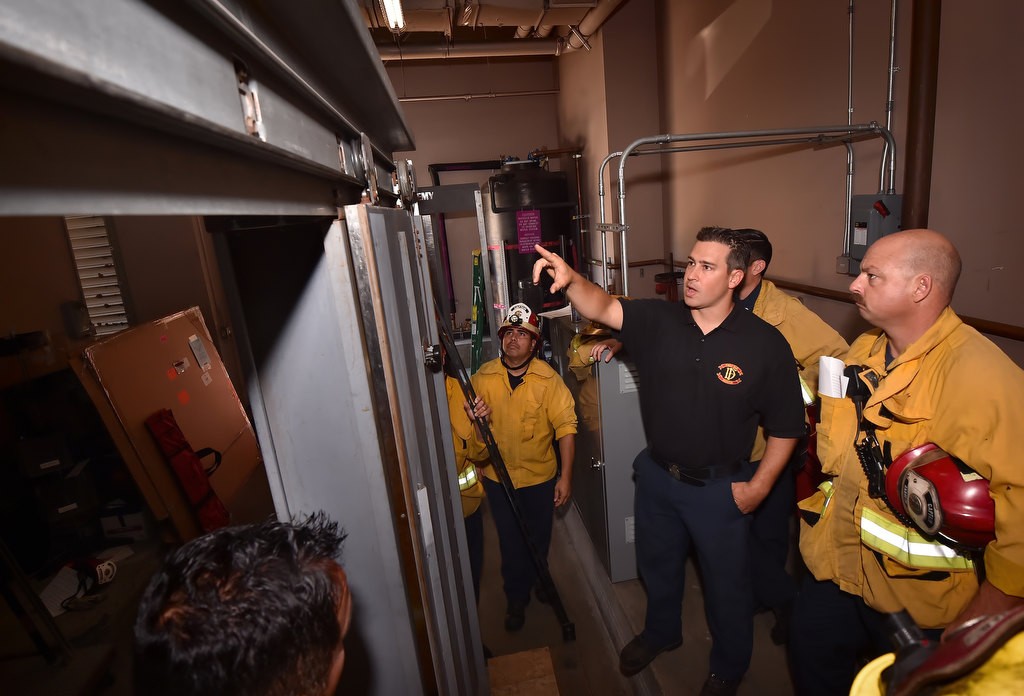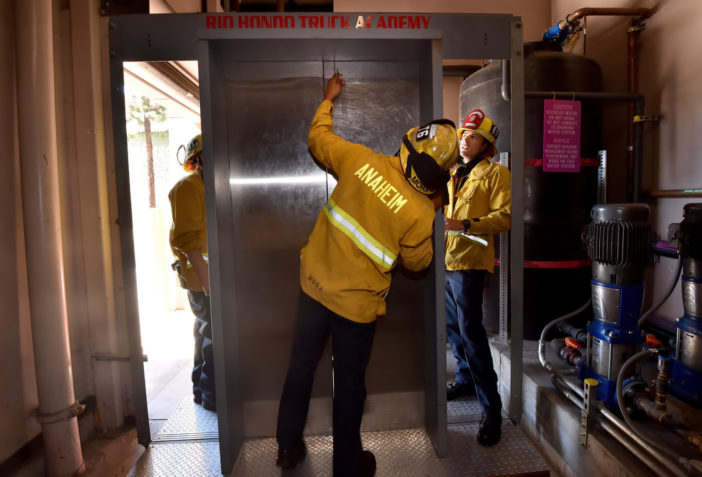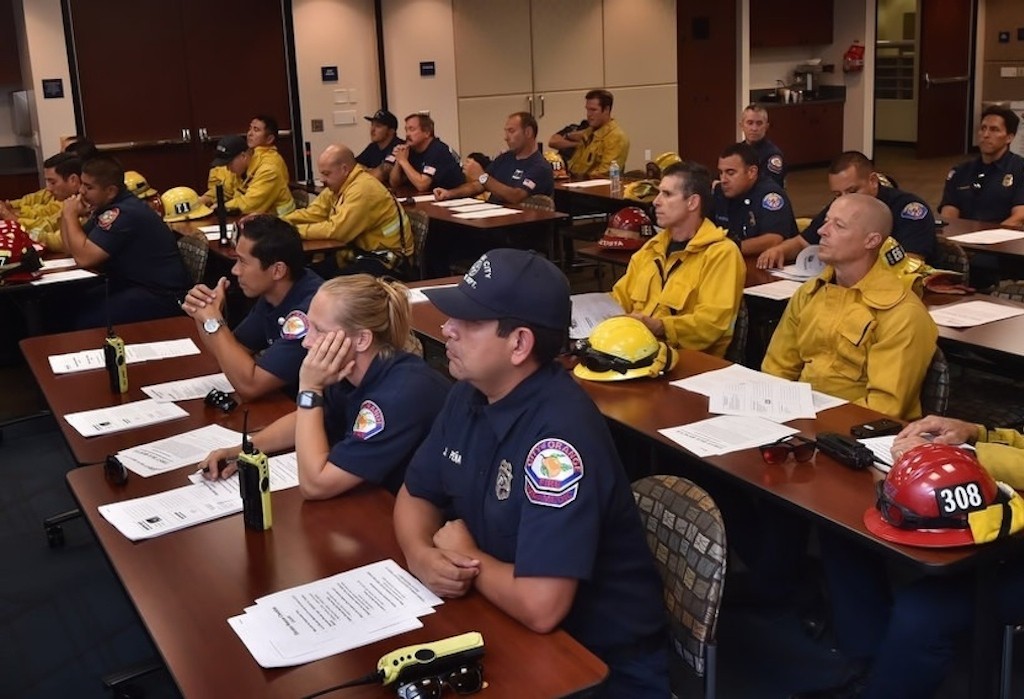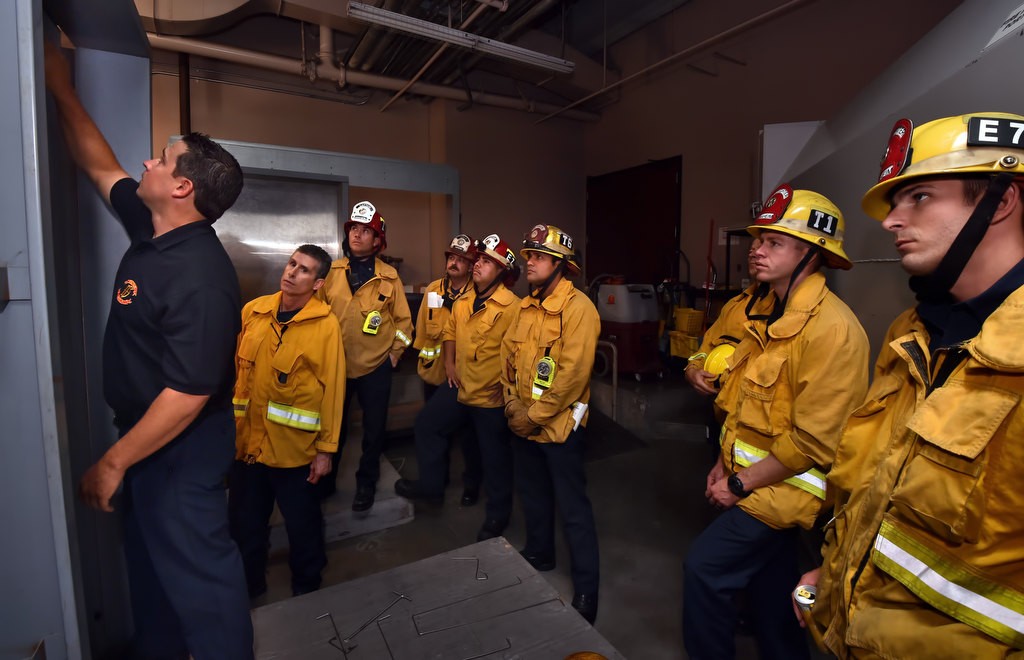It’s a little-known fact, but Anaheim Fire & Rescue responds to between 70 to 120 elevator entrapments annually, officials say.
While the majority of these emergencies are not life threatening, being stuck in an elevator obviously can be an angst-inducing experience for occupants, said AF&R Firefighter Mike Houghton.
“Every situation is different, but typically people are just agitated, frustrated and maybe have a little bit of anxiety because a lot of people have an issue with closed spaces,” Houghton said.
In keeping with its mission to protect life and property, Anaheim Fire & Rescue last week hosted a training session for its firefighters on elevator rescues. Fire personnel from Garden Grove and Orange also participated.

Firefighters from Anaheim Fire & Rescue attend an elevator rescue training session hosted by AF&R at the agency’s headquarters.
Photo by Steven Georges/Behind the Badge OC
“The training is really to elevate our fire department members’ skill level in dealing with elevator entrapment emergencies,” Houghton said. “For many years, we had skills that were passed down from the older-generations firefighters to the junior firefighters, but there was no standardized program for training.”
The two-part program was designed and taught by Los Angeles County Firefighter Steve Chute, who gave a Power Point presentation and lecture that covered the various types of elevators and their mechanics and the different tactical approaches used to perform the rescue quickly and safely.
“Pre-planning is going to be key for you guys,” Chute told the class on Wed., Aug. 17.
The firefighters then practiced using differently configured picks and tools on the three most common types of elevator doors — a process akin to using a Slim Jim to get into a locked car.

Anaheim Fire & Rescue Firefighter Mike Houghton (black shirt) instructs a class of firefighters where the door locks are on the inside of an elevator during a elevator rescue training session at Anaheim Fire & Rescue’s headquarters on Aug. 17. Photo by Steen Georges/Behind the Badge OC
Elevators suddenly can stop for a variety of reasons, Chute said.
Power outages, computer system glitches and mechanical problems can all be factors.
But the No. 1 contributing factor to an elevator malfunction is humans behaving badly.
People jumping up and generally horsing around can activate a seismic activity sensor and cause the car to stop, Houghton said.
So can exceeding the car’s maximum weight capacity.
There is one priority, however, before fire personnel determine the problem and then the strategy to get the car moving again.

Capt. John Lesovsky of Anaheim Fire & Rescue looks for the spot to insert a special tool to unlock the doors of an elevator during a training session.
Photo by Steven Georges/Behind the Badge OC
“Our first step, after making contact with the occupants, is insuring that they don’t have a medical emergency,” Houghton said. “You have 10 or 15 people in a car … it gets hot. Everybody starts sweating and people start getting anxious. Anxiety can lead to increased probability of medical problems for a lot of people, especially elderly people.”
Next, firefighters will try to reboot the computer system operating the elevator, which gets the car moving again about 80 percent of the time, Houghton said.
If that doesn’t work, firefighters break out the tools and get to work trying to pick open the door.
Personnel from the elevator’s manufacturer are always called to the scene as well and will know the best way to get the car running or perform the rescue, Houghton said.
“If there is no medical emergency, the idea is to serve our customers the best we can without damaging property,” he said. “These elevator doors … if we cause a lot of damage, can be $10,000 plus to fix. We like to work with our partners in the community, as well as the elevator industry to utilize the best practices to gain access.”
 Behind the Badge
Behind the Badge





